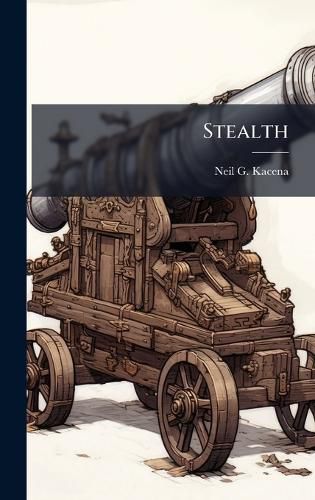Readings Newsletter
Become a Readings Member to make your shopping experience even easier.
Sign in or sign up for free!
You’re not far away from qualifying for FREE standard shipping within Australia
You’ve qualified for FREE standard shipping within Australia
The cart is loading…






This paper traces the development of stealth as an example of the way in which technology is invented, selected, acquired, and employed by the U.S. Armed Forces. The relationship between technology and the American culture that uses it is the foundation of the discussion. Stealth, as a specific technology, is traced from the prominent position of technology in the American way of war through its employment on the battlefield in Operation DESERT STORM. Lessons from this development highlight the different levels of success achieved by the American way of war as contrasted to the American way of acquisition. Finally, doctrine technology application, future opportunities, and limitations are explored in an effort to flesh out a comprehensive view of how the development of stealth contributed to the American way of war and what lessons can be applied to the key supporting element, the American way of acquisition. The apparent effectiveness of the application of stealth technologies should not imply that the same level of success was achieved in the acquisition of those technologies. The seemingly unplanned convergence of basic research, a well understood requirement, a number of supporting technologies, and the right entrepreneur is compared to a robust application of stealth technology to combat through the medium of doctrine. The author concludes that doctrine does not have the same effect on the technology process selection as it has on its application and that the importance of the human element to technology development has not diminished, but continues to grow.
This work has been selected by scholars as being culturally important, and is part of the knowledge base of civilization as we know it. This work was reproduced from the original artifact, and remains as true to the original work as possible. Therefore, you will see the original copyright references, library stamps (as most of these works have been housed in our most important libraries around the world), and other notations in the work.
This work is in the public domain in the United States of America, and possibly other nations. Within the United States, you may freely copy and distribute this work, as no entity (individual or corporate) has a copyright on the body of the work.
As a reproduction of a historical artifact, this work may contain missing or blurred pages, poor pictures, errant marks, etc. Scholars believe, and we concur, that this work is important enough to be preserved, reproduced, and made generally available to the public. We appreciate your support of the preservation process, and thank you for being an important part of keeping this knowledge alive and relevant.
$9.00 standard shipping within Australia
FREE standard shipping within Australia for orders over $100.00
Express & International shipping calculated at checkout
Stock availability can be subject to change without notice. We recommend calling the shop or contacting our online team to check availability of low stock items. Please see our Shopping Online page for more details.
This paper traces the development of stealth as an example of the way in which technology is invented, selected, acquired, and employed by the U.S. Armed Forces. The relationship between technology and the American culture that uses it is the foundation of the discussion. Stealth, as a specific technology, is traced from the prominent position of technology in the American way of war through its employment on the battlefield in Operation DESERT STORM. Lessons from this development highlight the different levels of success achieved by the American way of war as contrasted to the American way of acquisition. Finally, doctrine technology application, future opportunities, and limitations are explored in an effort to flesh out a comprehensive view of how the development of stealth contributed to the American way of war and what lessons can be applied to the key supporting element, the American way of acquisition. The apparent effectiveness of the application of stealth technologies should not imply that the same level of success was achieved in the acquisition of those technologies. The seemingly unplanned convergence of basic research, a well understood requirement, a number of supporting technologies, and the right entrepreneur is compared to a robust application of stealth technology to combat through the medium of doctrine. The author concludes that doctrine does not have the same effect on the technology process selection as it has on its application and that the importance of the human element to technology development has not diminished, but continues to grow.
This work has been selected by scholars as being culturally important, and is part of the knowledge base of civilization as we know it. This work was reproduced from the original artifact, and remains as true to the original work as possible. Therefore, you will see the original copyright references, library stamps (as most of these works have been housed in our most important libraries around the world), and other notations in the work.
This work is in the public domain in the United States of America, and possibly other nations. Within the United States, you may freely copy and distribute this work, as no entity (individual or corporate) has a copyright on the body of the work.
As a reproduction of a historical artifact, this work may contain missing or blurred pages, poor pictures, errant marks, etc. Scholars believe, and we concur, that this work is important enough to be preserved, reproduced, and made generally available to the public. We appreciate your support of the preservation process, and thank you for being an important part of keeping this knowledge alive and relevant.